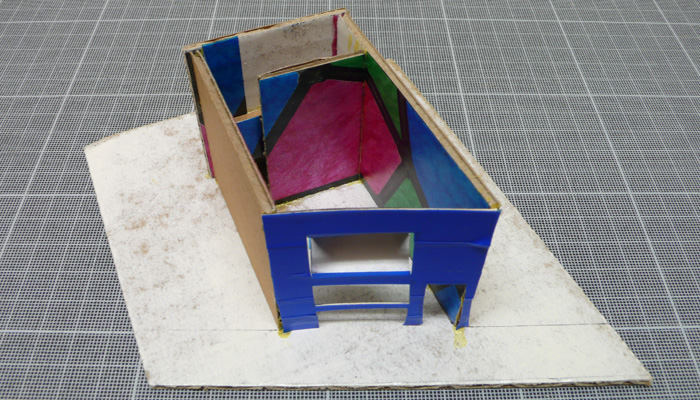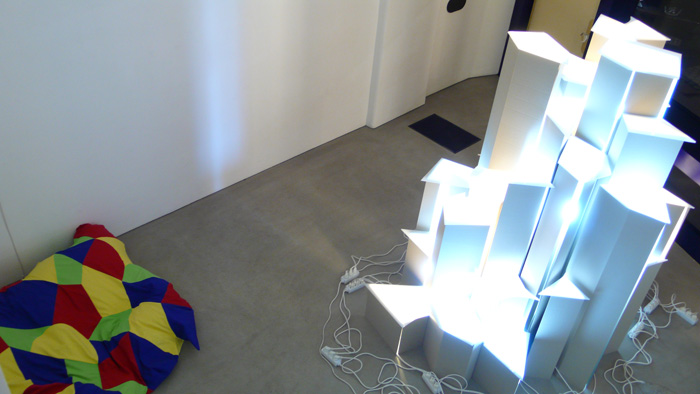
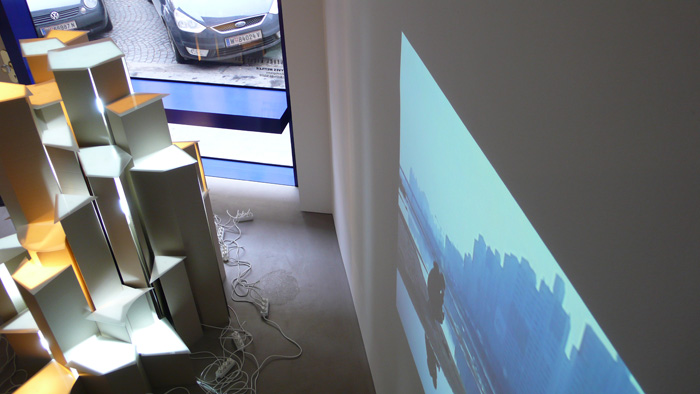
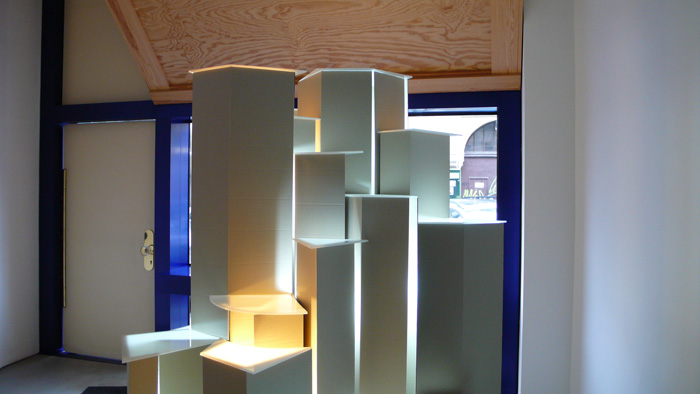
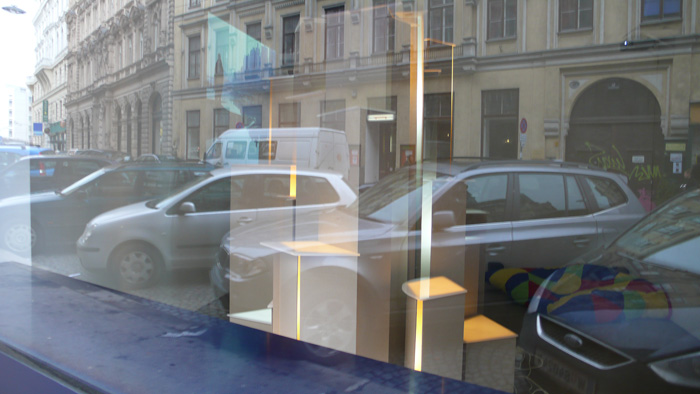
Exologisms
Georg Kargl BOX
Exhibition Dates: January 18, 2008–March 1, 2008




Yves Mettler has chosen an unusual approach for his exhibition at Georg Kargl Box: he first invented a
term, and then explored what it might stand for in his work. Fundamental for the artist were his
existential experience of being bound in external processes and patterns, and his longing to find tools
with which these external conditions could be changed and shaped. To find or invent tools to produce
situations that allow for this cultural transformation, things would have to be radically rethought, new
concepts would be necessary. In this sense, the exhibition operates as an experimental space in which
the attempt is made to create these moments, to activate them and with each visitor bring them out to
the space that Mettler is especially interested in: urban space.
Exologisms recognize the other before it is exotic
—Yves Mettler
The term he has chosen is exologisms. The story of lead glass foil helps to grasp the meaning of
exologisms. As a decorative foil produced in Germany that can be affixed to windows for purposes of
beautification and protection, it makes reference to European cultural history, for the patterns
represented are taken from Gothic stained glass windows. But interestingly, this foil is most successfully
sold in the Arabic world, where it is used as decoration for ceiling lamps or windows. As a common
replacement for the traditional maschrabias or wooden shutters, the foil here becomes a medium
between cultures. The border is fluid.
Exologisms configure a culture that transforms the relations between cultures, modalizing them and
formalizing them. (YM)
The pattern of this foil interests Mettler in a dual sense: on the one hand as a globalized product that
makes use of Western cultural history, and at the same time as a possible image for the processes that
produce urban space. For him, this sample represents the formalization of a threshold, the threshold of
inside and out, between abstract form and concrete political space.
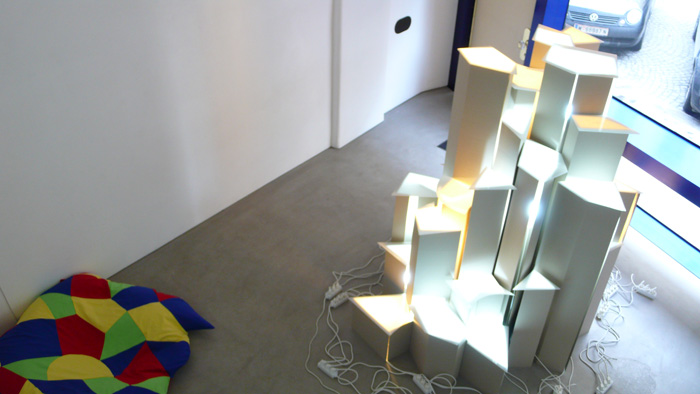
This sample is now transformed, expanded, and translated like a kind of leitmotif in the exhibition. Just
as words can be declined, here Mettler declines the formal possibilities of the sample, and watches what
happens when the form bends and enters into dialogue with other exologisms by way of their mutual
encounter.
Exologisms are desirable for they allow various models of existence to appear alongside one another.
(YM)
This sample, filled with volumes and constructed of cardboard, is able to form an object that seems to
be both an abstract light sculpture as well as the reproduction of a skyline. This sculpture, reminiscent of
a model without being one, here becomes a illuminated body, a beaming structure of multiple layers
whose light pushes outwards through narrow slits that also seem impenetrable. In so doing, The
Neighbourhood is located somewhere between the illustrative function of architectural models and the
autonomy claim of contemporary sculptures, without fulfilling either.
Exologisms are needed wherever a link is created to the outside without it being marked as outside.
(YM)
The pattern seems blown up in The Island, the pillows from which one can comfortably get an overview
over the rest of the events.
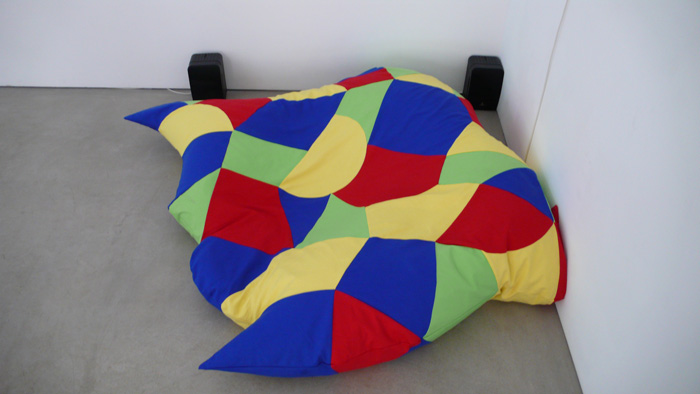 |
| The sound on the website is the sound that is coming from the speakers next to The Island: A voice tells you like a secret what Exologisms are ... |
A second skyline can be found in the video The River, a skyline that seems
unattainable for the subject, who is separated from it by a river. While a day passes and the figure
spends the time engaging in inexplicable activities, the city remains a slightly pulsing body in the
background that never seems to come to rest.
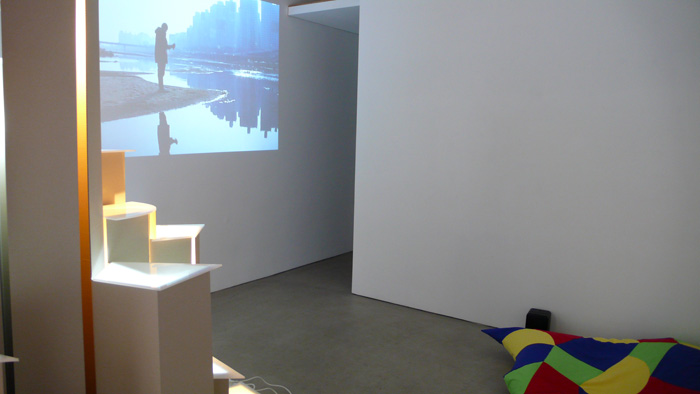
The relationship between the city and the individual subject seems here to be formalized, while the sound
installation is tied to a very particular city-subject relationship: that of Yves Mettler and the city in which he
currently lives, Berlin.
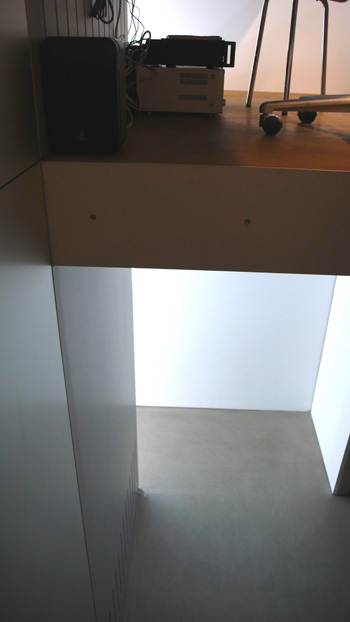 |
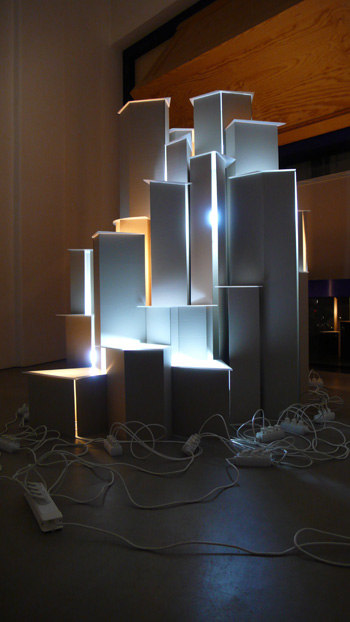 |
| The field recordings are coming from speakers set upstairs in the office, creating a kind of additional and variable space to the front room. The recordings are playing randomly from a CD. |
The question of “neighborhood” is posed in quite a subjective fashion: how does my neighborhood sound, how
can it be identified through sound, what can I find out from the sounds of the city? By way of so-called “field
recordings,” Mettler tries to come closer to his surroundings, experience them more consciously, and
activate their imaginary potential. Repeatedly obtruding on us, later disappearing to the depths of the
unconscious, sound is much more direct than image. It inspires our imagination and lies across the
entire exhibition like an invisible carpet.
Exologisms are to that extent possible that one recognizes ones own culture and produces with no fear of
losing it, or vice versa, of getting lost in another culture. (YM)
Countless relationships are created among the individual components of the exhibition: they overlap,
stand in one another’s way, complement one another, illuminate from various aspects, zoom in and out.
The exhibition is thus to be understood as a whole from which the individual parts are difficult to
separate. This condensation of experience is the exhibition’s hidden quality. To truly place the relations
between cultures on new, untested foundations, to truly achieve something like cultural heterogeneity,
we need to be able to think between the parts; complex relations must be allowed. For ultimately it is not
important to define exactly what exologisms are. On the contrary: this would be the end of all
exologisms. These moments must be reconstructed over and over, questioned and varied.
Exologisms are always temporary. But they do not take off, satisfied with the ensemble of now. The
ostensible interests of exologisms are articulating approaches towards the mainstream as well as the
subculture, local and nomadic, migrating or imported cultures. (YM)
Text: Christian Mayer
Translation: Brian Currid
